 Written by Morgan Hopkins, DPT, CMTPT
Written by Morgan Hopkins, DPT, CMTPT
Electrotherapy may sound like a barbaric (if not torturous) practice, but it is in fact a frequently utilized modality that permeates rehabilitation and recovery markets. According to the 2019 National Health Interview Survey, over 50.2 million adults reported pain on most if not every day of the week. With such staggering numbers and an ongoing opioid epidemic, it’s imperative that we as healthcare professionals educate the public on non-pharmacologic options for pain control. Offering varying types and distinct indications, electrotherapy provides individuals countless benefits, including pain modulation, which can contribute to enhanced function and quality of life.
Electrotherapy is a type of modality commonly employed in rehabilitation that uses electrical stimulation to generate therapeutic benefits in the body. Through the application of an electric current via electrode pads or clips, the therapy can improve circulation, enhance physical functioning, reduce pain, promote healing and facilitate muscle activation.
Many patient populations can benefit from electrotherapy modalities with widespread indications and therapeutic advantages. Whether you are looking to augment muscular contraction following a stroke, manage your chronic back pain or reduce the symptoms of anxiety, electrotherapy may be right for you.
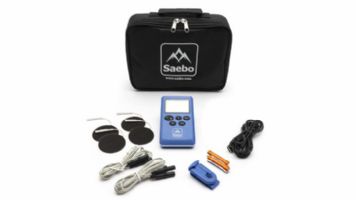 | SaeboStim Pro | NMES, TENS, and E Stim Machine View Product |
Electrotherapy can be found in a variety of devices for both home and clinical use. Within these devices are varying mechanisms and forms of current which offer users distinct outcomes and healing benefits.
The most popular type of electrotherapy, transcutaneous electrical nerve stimulation is a modality that delivers electrical impulses to impart pain relief. It is often offered in a portable device and can be used to manage both acute and chronic pain. Although it isn’t a cure, it can be a great treatment adjunct to help control the symptoms of arthritis, pelvic pain, fibromyalgia, and acute sports injuries.
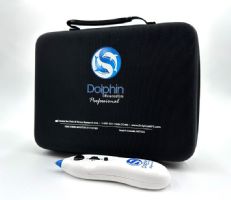 | Dolphin Neurostim Acupuncture Simulation TENS Unit Kit | Professional Version View Product |
Electrical muscle stimulation is a second form of electrotherapy which is unique in its mechanism of sending current directly to the muscle causing repeated contractions. It can help with muscular atrophy as well as spasms and promotes muscle activation. In trained athletes, it has been shown to significantly enhance strength parameters.
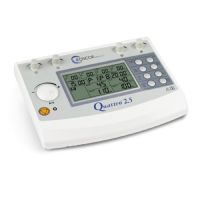 | Quattro 2.5 EMS Muscle Stimulator View Product |
Cranial electrotherapy stimulation is a third form of electrotherapy which offers users a unique approach and potential outcomes. As the name suggests, it is applied specifically to treat disorders of the brain. By indirectly stimulating tissue near the hypothalamus, it is postulated that this form of electrotherapy helps restore imbalanced neurochemical levels in the brain commonly identified in anxiety and depression.
Similar to TENS, interferential current is another form of electrotherapy that is used for acute and chronic pain management. Contrary to TENS, however, IFT uses two different frequencies that interfere with one another over the region of discomfort to modulate pain. Frequently used in physical therapy settings, this form of electrotherapy promotes healing, circulatory benefits, and swelling control.
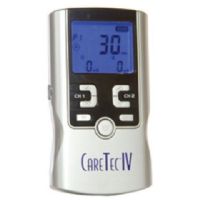 | CareTec IV Portable Russian, EMS, TENS and IF Therapy Unit View Product |
Functional electrical stimulation is primarily used to augment movement potential. Typically applied to the skin overlying a nerve, FES leads to muscle contraction which is timed with active movement. It is intended to facilitate functional movement helping individuals after a stroke or spinal cord injury regain active muscle contraction and function.
Also termed neuromuscular electrical stimulation, Russian stim is similar to FES in its intended goal of promoting muscle activation. Often applied after orthopedic surgeries to re-educate inactive muscles, Russian stim employs an alternating pattern of “on-off” signaling timed with active muscle contraction.
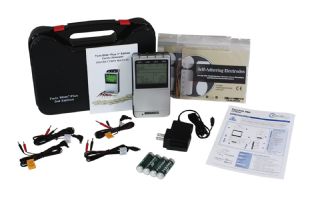 | Digital EMS, TENS, IF, and Russian Combo Unit View Product |
The final electrotherapy form is microcurrent or MET which uses small currents at a low frequency to decrease inflammation, facilitate healing and help alleviate pain. Compared to TENS it uses currents that are approximately one-thousandth the size. Microcurrent therapy can be used for postoperative pain, sports injuries, headaches, and osteoarthritis amongst other conditions and has been backed in research in its claims to reduce pain and improve function.
While the various forms of electrotherapy do share commonalities, they each offer distinct signaling and mechanisms to impact varying conditions and parts of the body. For those looking for pain relief, TENS, IFC, and MET would be most appropriate. In these forms, the electrotherapy imparted facilitates pain reduction by using electrical signals to block neural pain transmission to the brain. This concept, referred to as the gate control theory, explains that the application of alternative sensory inputs can essentially distract the brain away from the pain.
Besides pain relief, electrotherapy can be used to re-educate inactive muscles, facilitate strength and promote functional movement. When muscular activation is the goal, FET, NMES, or EMS would be most fitting. In these forms, electrotherapy is applied to mimic the action of neural signals that come from the brain causing muscular contraction.
The final form of electrotherapy, CES differs greatly in its therapeutic use. In this type, the goal is to reduce symptoms of anxiety and depression. Also called transcutaneous vagal nerve stimulation, the application is performed via an electrical clip to the ear lobe and works to restore neurochemical levels in the brain.
Choosing the right electrotherapy device comes down to treatment goals and individual needs. Once you identify your treatment goals, define your budget and consider unique features such as device size and portability to zero in on the best device for you.
Electrotherapy is a tried and true modality that has innumerable benefits. Through applied electrical stimulation, this treatment can promote pain reduction, enhance muscular strength and activation, and contribute to anxiety reduction.
If you or someone you know is interested in an electrotherapy device, check out our full listing of products here. While you’re there, feel free to browse through Caregiver University, our expert-curated collection of buying guides and educational blog posts to help you make the most informed decisions on all of your medical device needs.

Morgan Hopkins is a licensed doctor of physical therapy and freelance medical writer. She practiced clinically in outpatient orthopedics for 8+ years specializing in intramuscular dry needling, dance medicine, and post-operative care. Morgan seeks to be a leader in the continued shift toward preventative healthcare, helping people optimize movement now so they can move for years to come. She is a firm believer in complementary therapies, holistic wellness, and functional fitness and is thrilled to be able to educate others through Rehabmart’s platform.